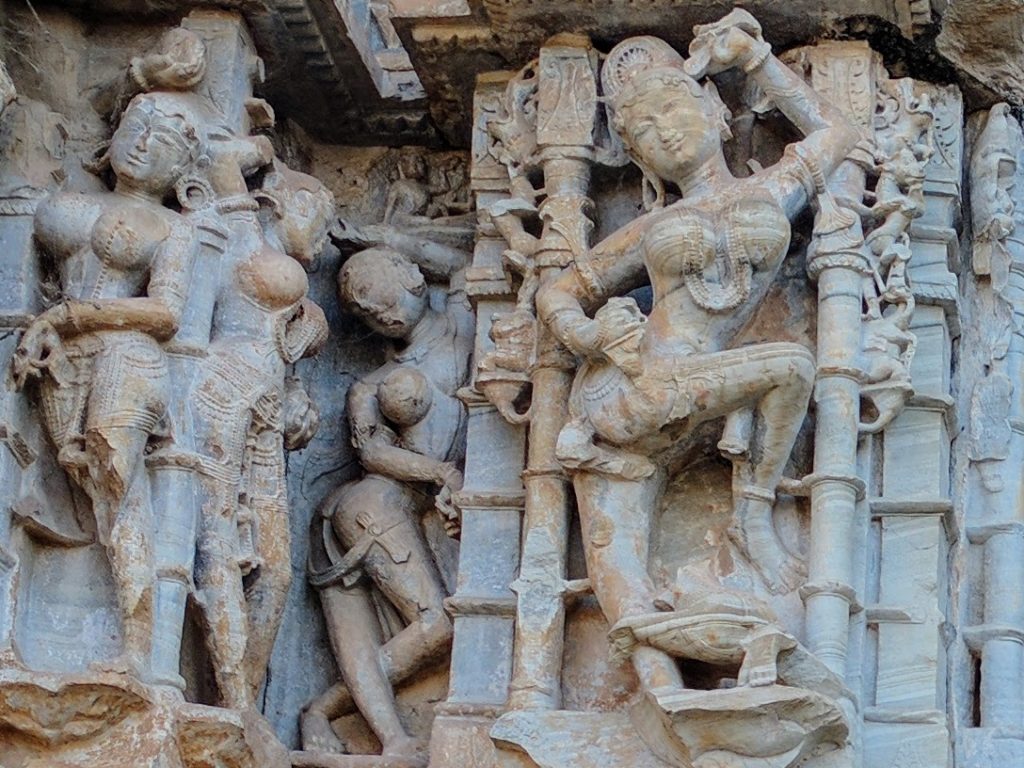Problems with destination-based corporate taxes and the Ryan blueprint
That is a recent paper by Reuven S. Avi-Yonah and Kimberly Clausing. It has content throughout, but this struck me as the most interesting section:
1. A U.S. pharmaceutical with foreign subsidiaries could develop its intellectual property in the United States (claiming deductions for wages, overhead and R&D), and then sell (i.e., export) the foreign rights to its Irish subsidiary (at the highest price possible). The proceeds would not be taxable. Ireland would allow that subsidiary to amortize its purchase price. This creates tax benefits in each jurisdiction by reason of the different regimes. If the Irish subsidiary manufactures drugs, the profits could be distributed up to the U.S. parent tax-free under a territorial system. If the Irish subsidiary is in danger of becoming profitable for Irish tax purposes, the U.S. parent would just sell it more IP.
2. If an Irish parent owns a U.S. subsidiary, the Irish parent can issue debt to fund the purchases of the IP. The U.S. subsidiary then invests the cash to generate more IP (expensing all equipment and deducting all salaries) and sells the IP to its parent.
3. If an Irish parent has purchased the U.S. IP rights, it would not want to license the rights to the U.S. subsidiary (income for Irish parent under Irish tax law and no deduction for U.S. subsidiary). So it just contributes the rights to another U.S. subsidiary. Could the U.S. subsidiary amortize the parent’s basis under the Blueprint? When one U.S. subsidiary licenses to another, no net tax would be paid. Any royalties would be taxable to the licensor but deductible for the payor.
4. How does the Blueprint work for services? If a U.S. hedge fund manager provides services to an offshore hedge fund, is that considered an export that is tax exempt? What if the U.S. manager develops a trading algorithm and sells it (or licenses) it to an offshore hedge fund? Are the proceeds and royalties exempt? If so, then the hedge fund becomes a giant tax shelter to the manager, because he would not pay 25% on this income–he would pay zero, with no further tax. This is much better than the current carried interest provision, which has attracted bipartisan condemnation because it enables individuals with income of many millions to pay a reduced rate. The Blueprint result is much worse.
Jeff Mcmahan on Derek Parfit
Above all else, dedicated:
Parfit had a native genius for philosophy. But he also devoted more time and concentrated effort to the development of his ideas than any other philosopher I have known. He once mentioned a passage in a book of economic history that noted that the concept of work had sometimes been understood in such a way that work was necessarily unpleasant. On this understanding, Parfit almost never worked. Yet throughout his adult life he did little other than think about, read, and write philosophy. When I visited Oxford in January and February of 2014, I stayed in his house. During those months, he left the house only a few times. In all but one instance, he left only to walk a few blocks to buy fruits and vegetables for his spartan meals. The other instance was when he walked with me to an appointment I had so that we could continue the philosophical discussion we were having. The one exception to his monomaniacal commitment to his philosophy was his architectural photography, samples of which appear on the covers of his four books. But he gave that up many years ago when he came to fear that he might not live long enough to complete his remaining work in philosophy.
There are many anecdotes about the ways in which Parfit simplified his life to take as little time as possible away from his work. He ate only twice a day, with almost no variation in what he had at each meal. He ate cold food only, mostly fruits and vegetables without any preparation. Even when he could have had freshly ground coffee with only a minute’s additional preparation, he drank instant coffee, often with water straight from the tap. He sometimes kept a book open on the chest-of-drawers so that he could read while putting on his socks. His speed in reading was phenomenal, in part because his power of concentration was prodigious. Wanting to preserve his mental and physical capacities, he took an hour every evening during his last decade to get vigorous exercise on a stationary bicycle, but never without reading philosophy (or occasionally physics) while furiously pedalling.
Parfit’s kindness and generosity, not only to his students and friends but to others as well, are legendary. The comments he gave to people on their manuscripts were sometimes longer than the manuscripts themselves, and the comments were invariably articulated in the gentlest, most tactful, encouraging, and constructive way possible. He frequently wept, not for himself but always from compassion for others.
Here is the full piece, the final two paragraphs are a complete gem. That is via Joshua Cohen, and various retweeters.
Friday assorted links
Complacent Confessions
How many direct reports should an American president have?
Arnold Kling writes:
One way to improve government operations would be through re-organization. I once wrote,
“the total number of executive entities is 157. I cannot think of any corporation in which the CEO has so many direct reports. This number ought to be fewer than ten.”
I proposed consolidation. Ideally, this would be done through legislation. However, if Congress balks, the President could informally choose to make some Cabinet officials and agency heads subordinate to others
Such informal hierarcies arise in any case, but can you imagine a private corporation that tried to run on such a basis? NB: You can and should be horrified by this organizational detail, without adhering to the (false) view that “government should be run as a business.” If you wish, take a large non-profit and ask how many people are direct reports to the CEO, or ask how such organizations would fare if the hierarchies of responsibility were never outlined explicitly.
What about moving the American capital out West?
If the US capital would move to the West coast where would it be located? Would this make more sense as China/ India grow in power? How would US policy change if at all having a West coast perspective if such a thing exists? What if it had moved previously at some point in our history? Is there anything that would have played out differently?
That is a request from George, a loyal MR reader.
It has become increasingly clear that the D.C. bureaucracy and policy world will be able to thwart most of what the Trump administration might have been thinking of doing. In this particular case I see much upside in that, but still it is a dangerous precedent. The political culture of the ruling capital city should not always hold such sway.
The longer-run problem, of course, is that putting the national government in a city makes that city “more professional” in a way that also will turn the city more toward the Democratic Party, noting that many cities in America are fairly Democratic to begin with.
Increasingly, I am a fan of the idea of distributing our government across various cities and regions of the country. so here are a few suggestions, focusing on the West:
1. The agencies concerned with economic regulation would go to Salt Lake City, Utah.
2. The offices concerned with science policy, including the NIH and NSF, would be relocated in or near Silicon Valley. I believe the ability to absorb the dynamism would outweigh the rent-seeking problem. There is already plenty of venture capital in the Bay Area, and the lure of government funds is relatively non-corrupting there. Rents are high but the total number of staff is not enormous, so give them each a big raise.
3. The Department of Agriculture would go in Honolulu, Hawaii. It would be harder to get to, and once you were there you might just go swimming. An alternative would be Twin Falls, Idaho “…near the site where Evel Knievel attempted to jump across the Snake River Canyon in 1974 with a rocket-powered motorcycle.”
4. The National Endowment for the Arts would be put in southern California, so as to be reminded that America’s heritage is one of popular culture. This would be one of the agency moves easiest to pull off.
5. The defense establishment would be clustered near Los Angeles as well, where there has long been a military connection and also a talented pool of engineers and numerous airports and access to the ocean.
6. I see New York City capture of the Treasury as an overrated issue, so if it must go out West I am fine with Denver, Dallas, or Houston, cities with a fair number of direct flights to back east. San Francisco would work in the abstract, but rents are too high there.
7. The presidency goes to Sacramento, which is already a major capital and has enough space for something larger and better-guarded than the White House. It is also not too close to the other parts of the federal government, and it would lower the relative status of the governor and legislature of California, to the benefit of America’s largest and richest state and bellwether of our future.
It is hard to predict how big a change all this would make, or how much of the change would be due to decentralization per se, rather than the movement westward. Maybe those living in the western part of the country would feel less like outsiders, while those marooned in the East simply would go insane. New England would be the new Rust Belt, and in some ways it already is the current Rust Belt. Foreign policy would be more Pacific-oriented, mostly a good thing if believe in doing something rather than nothing, but that could backfire as well.
Virginia real estate would be worth less.
As for moving the federal government out West earlier in American history, I don’t see how one might run a bureaucracy where a professional major league baseball team cannot be supported. So we’re talking 1950s or later, and even up through the 1960s. Probably the main effect would have been to ruin California even more quickly than turned out to be the case.
Trump’s executive order on climate change
One of the best things about Cass Sunstein as a writer is that his goal is to inform us. Here is his opening bit:
Contrary to numerous reports, President Donald Trump’s executive order on climate change does not come even close to eliminating President Barack Obama’s legacy with respect to greenhouse-gas reductions. Most of that legacy, involving dramatic emissions cuts in the transportation sector and from household appliances, remains intact.
Nonetheless, the order is massively important and, in some respects, reckless. In addition to mandating reassessment of the Clean Power Plan, which regulates coal companies, Trump jettisoned, all at once, the Obama administration’s “social cost of carbon,” which has been the linchpin of national climate policy since 2009. But he did not say what the Trump administration will replace it with. On that count, he punted — which is not the worst thing, and which leaves some crucial decisions open for his staff.
Here is the full column, and it has much more of interest. I feel bad about running such “remedial material” on MR, but overall I see reporting on Trump as continuing at very low standards, even in some otherwise very good outlets.
From the comments: on the change in your internet privacy
I am still seeing many misleading headlines and takes on the recent Congressional vote to “sell your internet privacy.” Do read this thread to the bottom (link here):
March 29, 2017 at 9:27 am [edit]
-
-
-
-
The rules that are being changed went into effect january 4th? is that correct?
TC again: If you believe these claims to be wrong, by all means tell us and I will investigate the matter further. But so far I think I am witnessing another case of “Trump exaggerated click-bait headlines” on this one. It is fine if you think this change is a bad idea, but it is hard for me to see it as the internet privacy skies falling, especially if you already are using Google and Facebook. It’s not exactly the case that our privacy birthright has been stolen from us…
Here is further useful perspective from The Washington Post.
-
Thursday assorted links
Why Does India Have So Few Tourists?
Pragati: India has tremendous advantages as a producer of tourism, but its tourism sector is far too small. India is underperforming and in the process giving up tens of billions of dollars in foreign exchange revenue that could lift millions out of poverty.

Nearly nine million tourists visited India in 2016 generating foreign exchange revenues of about $23 billion USD annually. At first glance, the figures are impressive. Tourism is one of India’s largest export sectors, beating out such leading sectors as apparel ($17.4 billion, 2014) and medicinals and pharmaceuticals ($13.9 billion, 2014). A more careful examination, however, reveals that India’s tourism sector is small compared to its potential.
The table below shows the top ten countries by international visitors. France leads the list with 84.5 million visitors a year, about ten times the number of visitors to India. The European countries, France, Spain, Italy, Germany and the UK benefit by being close to one another which generates significant mutual tourism. Mexico, Russia and Turkey, however, all have approximately three to five times as many tourists as does India. China has more than six times as many tourists as does India.
Although India underperforms on the number of visitors it does very well on earnings per visitor…Remarkably, India earns more per visitor than does China and almost as much as does the United States, a whopping $2,610. In fact, despite the small number of tourists, India’s revenues per tourist make it 9th in the world for total tourism revenues, just above Mexico. Visitors to India spend a lot of money which makes it all the more remarkable that India has so few visitors.
That’s me writing in Pragati, an Indian journal of ideas. India could increase its earnings from tourism by tens of billions of dollars with just a few simple reforms–see how at the link and some additional ideas for increasing tourism are in a podcast that I did with Amit Varma.
And, of course, even without reforms on the supply side there should still be more tourists in India as there are a great number of things to see!
Temple at Chittorgarh Fort.

Udaipur (Sahelion Ki Bari) with early 18th century fountains that work entirely by gravity.

Ajanta caves.

Cuba reforms are stalling
Cuban president Raúl Castro is preparing to step down next year, Venezuela has cut millions of dollars in aid and Donald Trump’s election has cast a shadow over the nascent US-Cuba detente. Unnerved by the changes, Havana has allowed its domestic reform drive to grind to a halt as the Communist party battens down the hatches. Marino Murillo, the senior official leading Cuba’s reforms, has not been heard in public for almost a year.
And:
The slowdown in domestic reforms suggests the orthodox wing of the Communist party is strengthening, says Carmelo Mesa-Lago, professor emeritus of economics at Pittsburgh University and a long-time Cuba watcher.
And:
Some US businesses have scaled back their initial euphoria about opportunities in Cuba. Although 615,000 Cuban-Americans and US tourists visited the country last year — of a total 4m foreign visitors — Frontier Airlines and Silver Airways cancelled scheduled US flights on March 13, citing lack of demand and market saturation. American Airlines and JetBlue have also reduced their schedules.
Here is the full FT piece by Marc Frank and John Paul Rathbone. Here is my earlier Bloomberg column on Cuba.
Urban productivity in the developing world
That is a new NBER working paper from Ed Glaeser and Wentao Xiong. Here are a few things I learned from it:
1. “As agglomeration size doubles, wages rise by approximately five percent in the U.S. and Brazil, but the link is much larger in India and China.”
2. “Soichiro Honda began his remarkable career as a car mechanic.”
3. Per capita gdp is three times higher in Shenzhen than in the rest of China. Bangalore per capita gdp is 2.5 times higher than the rest of India.
4. In the United States, urbanites earn 30% more, and this gap does not disappear with controls for human capital attributes.
5. The urban to rural earnings gap is 45% in China, 122% in India, and 176% (!) in Brazil.
6. In the U.S….”as area size or density doubles, wages increase by…about five percent.” But agglomeration economies are much stronger for India or China than for the U.S. or Brazil. Brazil is a city vs. countryside effect, not so much about size of the city per se, Sao Paulo aside.
7. “In 1961, Benjamin Chinitz argued that New York City was more resilient than Pittsburgh during the 1950s, because New York City had a culture of entrepreneurship that meant that its business leaders were good at adapting to industrial decline. In modern language, we might describe New York as having a healthy endowment of entrepreneurial capital because its dominant industry, garment production, had limited-scale economies and few barriers to entry. In contrast, Pittsburgh had U.S. Steel, and the steel industry had large-scale economies, which meant that Pittsburgh trained company men instead of entrepreneurs.”
Overall I found this a very good paper for stimulating thought. There is also a new paper by Joan Hamory Hicks, Marieke Kleemans, Nicholas Y. Li, and Edward Miguel on agricultural productivity gaps, it is receiving high praise on Twitter. I have not yet had a chance to look at it.
My new podcast with Ezra Klein
Here is part of Ezra’s description:
I had a simple plan: ask Cowen for his thoughts on as many topics as possible. And I think it worked out pretty well. We discuss everything from New Jersey to high school sports to finding love to smoked trout to nootropics to Thomas Schelling to Ayn Rand to social media to speed reading strategies to happy relationships to the disadvantages of growing up in Manhattan. And believe me when I say that is a small sampling of the topics we cover.
We also talk about Tyler’s new book, “The Complacent Class,” which argues, in true Cowenian fashion, that everything we think we know about the present is wrong, and far from being an age of rapid change and constant risk, we have become a cautious, even stagnant, society.
This as information dense a discussion as I’ve hosted on this podcast. I took a lot away from it, and I think you will too.
Here is the link.
Wednesday assorted links
1. Is it grade inflation for dogs, or are dogs getting so much better? Or is it just better matching of dogs to owners?
2. Are buffaloes more efficient than cows in India?
3. Masturbation, substitutes, and complements.
4. French prediction market, on last glance Le Pen was about 10%.
5. Rabbinic pizza wars (NYT).
A Visit to the Lasalgaon Onion Market
It’s a paradox of kinds that in the United States we use markets more than in other countries but as a people we are less likely to participate in a market. Of course, when we buy things at the supermarket we  are participating in a market but in posted-price markets it’s hard to see price formation and supply and demand in action. So when I travel abroad, I like to visit markets. (Tyler calls it GDP tourism).
are participating in a market but in posted-price markets it’s hard to see price formation and supply and demand in action. So when I travel abroad, I like to visit markets. (Tyler calls it GDP tourism).
The Lasalgaon onion market is Asia’s largest. It’s about four hours from Mumbai in Nashik district which is also well known for grape production. Twice a day during the season(s) onion farmers bring their small trucks and trailers filled with onions to auction. Farms in India are small, approximately 67% are one hectare (2.4 acres) or less and 99% are below 10 hectares. Thus, hundreds of trucks park in long lines that stretch into the distance. The farmers dump some of their onions onto the ground so the buyers can inspect for the type, size, moisture content and quality. An auctioneer then walks down the line and quickly auctions off the content of each truck. As we watched, one truck’s onion supply was bought for a buyer in Dubai, the next went to Malaysia, the next and highest quality went to France. The process is fast, fast, fast!
 We were guided in our adventure by Nanasaheb Patil, a highly respected businessperson and the chairman of the Agricultural Produce Market Committee, a group that runs the market and ensures the honesty of the auction process.
We were guided in our adventure by Nanasaheb Patil, a highly respected businessperson and the chairman of the Agricultural Produce Market Committee, a group that runs the market and ensures the honesty of the auction process.
Current onion prices are very low, below production cost, but high onion prices have brought down more than one national government so the farmers don’t get much of a hearing. When prices are high the government bans exports and blames farmers for hoarding (when prices are low as is true today, exports are allowed).
The onion crop from certain times of the year rots quickly.  The government did build a very expensive irradiation facility to improve shelf life but the facility, which can process 10 tonnes of onions an hour, was only used for 3 hours of onion processing in a recent year! Although using the facility isn’t expensive it requires unloading, sacking and reloading tonnes of onions which renders it uneconomic (the facility is used for mango irradiation because mangoes exported to the US must be irradiated.)
The government did build a very expensive irradiation facility to improve shelf life but the facility, which can process 10 tonnes of onions an hour, was only used for 3 hours of onion processing in a recent year! Although using the facility isn’t expensive it requires unloading, sacking and reloading tonnes of onions which renders it uneconomic (the facility is used for mango irradiation because mangoes exported to the US must be irradiated.)
One thing I hadn’t expected was that our presence at the auction market was something of an event and led to a story and photo (you can probably spot my wife and son) in the local newspaper.
We also visited some of the local grape farms. You can get an idea about wages by noting that on this farm, which was exporting grapes, every single bunch was wrapped in newspaper to prevent sunburn.
A special hat tip to Milind Murugkar, engineer, writer, and long-time reader of MR who invited me to Nashik and arranged for us to meet our wonderful host Nanasaheb Patil.

Something is not quite adding up here. According to Ars Technica, this vote replaces a rule that hasnt even taken affect yet. :
https://arstechnica.com/information-technology/2017/03/how-isps-can-sell-your-web-history-and-how-to-stop-them/
“So what has changed for Internet users? In one sense, nothing changed this week, because the requirement to obtain customer consent before sharing or selling data is not scheduled to take effect until at least December 4, 2017. ISPs didn’t have to follow the rules yesterday or the day before, and they won’t ever have to follow them if the rules are eliminated.”
Im not saying this vote is a good thing, but it sounds to me like all the things we fear are already possible.